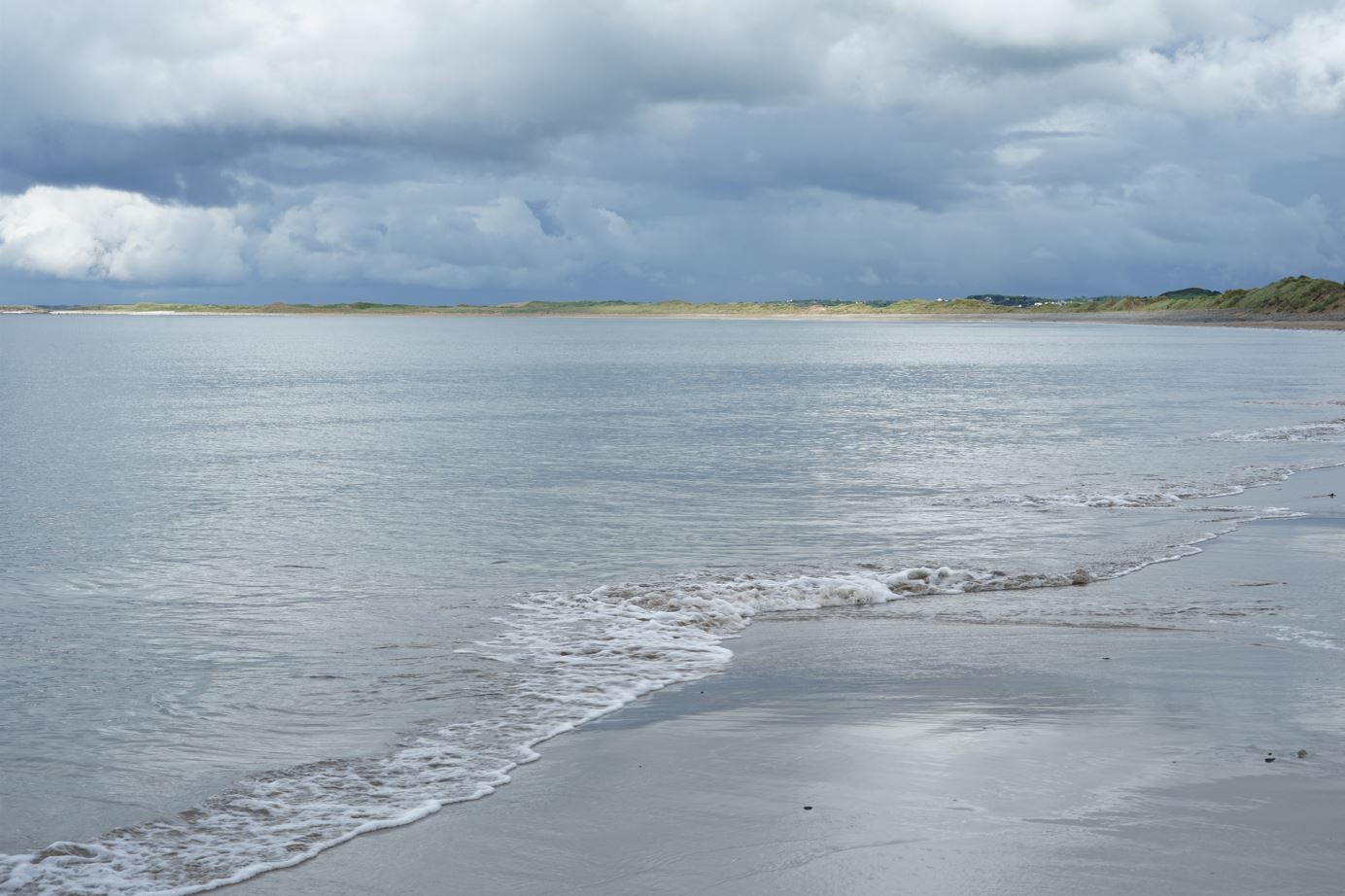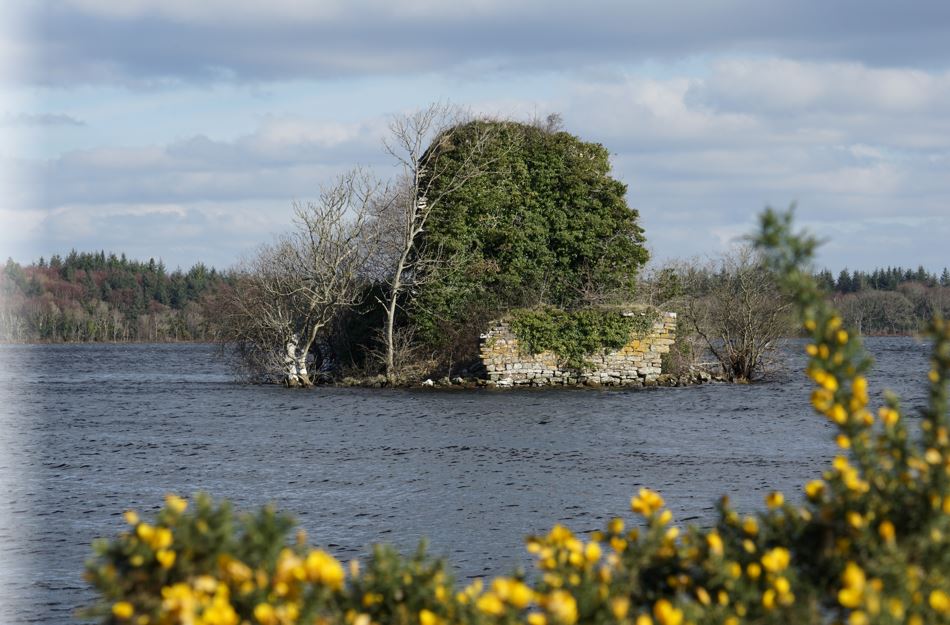1588 - the Spanish Armada
In March 1523, James fitzGerald, 11th earl of Desmond, agreed a treaty with King Francis I of France, at a time when relations between England and France had soured. In June, the treaty was signed at Askeaton Castle, Co. Limerick by the earl and a deputation sent by the French king. In an act that was even more treasonous than the rebellion of 'Silken' Thomas
a decade later, the earl of Desmond agreed to wage war against Henry VIII in support of a French invasion of Ireland. By 1525 England and France were at peace, and nothing came of the Franco-Desmond alliance. James fitzGerald was now forced to look elsewhere, and between 1528 and 1529 he carried out negotiations with Charles V of Spain. With relations between Spain and England soured, fitzGerald sent envoys to Spain with gifts of hawks and greyhounds. Desmond offered to become a subject of Charles V in return for military aid, requesting guns, artillery and gunpowder. In April 1529, a Spanish envoy arrived in Dingle and negotiations continued. One of the reasons James offered the envoy for his antagonism towards the English monarchy was the execution in 1468 of his grandfather Thomas fitzGerald, 7th earl of Desmond. Only a few weeks later, James was dead, and so ended the treasonous negotiations between an earl of Desmond and the monarchs of France and Spain, but only temporarily.
Forty years later, following the arrest and imprisonment in London of the Gerald fitzGerald, 15th earl of Desmond, his cousin James fitzMaurice fitzGerald had taken responsibility for the earldom in his absence. He agitated for the earl’s release through military force and sent emissaries to king Philip II of Spain, requesting him to send a representative to act as a new king of Ireland. In the end, Phillip II politely turned down the offer to interfere in Irish affairs. However, Spanish assistance did finally arrive during the Desmond Rebellion, when a small contingent of Spanish soldiers arrived at Smerwick Harbour in Kerry in July 1579, and a larger force of some 500 Spanish and Italian soldiers arrived in September 1580. Eight years later, when the Spanish arrived once again to Irish shores, this time in even larger numbers, it was purely accidental.
On 25 April, 1588, a special ceremony was held in Lisbon’s cathedral of Santa Maria Maior, to bless the Spanish royal standard, which would adorn the San Martín, the flagship of an Armada bound for England. On 30th May, the Armada, under the command of the duke of Medina Sidonia, set sail from Portugal and headed for the English channel. It comprised 141 ships carrying some 9000 sailors and 19,000 troops. Another of the Armada ships was the San Pedro, a 530 ton galleon warship, armed with twenty-four guns, a crew of 90 sailors and 184 soldiers. On board was Captain Francisco de Cuéllar. A native of Torrelaguna near Madrid in central Spain, he had already served over least 10 years in the Spanish navy. Despite several transatlantic voyages and considerable military experience, nothing prepared him for the adventure he would soon have in Ireland.
No sooner had the Armada left Lisbon than the fleet met poor weather. Due to unfavourable winds, it took nearly three weeks to reach the Galician port of La Coruña in northern Spain. It took another few weeks for the ships to regroup and replace supplies that were already running short. When the Armada finally set sail from La Coruña, the fleet had increased to 151 ships. They proceeded towards Lizard on the southern tip of Cornwall. From there they would sail together towards the coastline of Kent and establish a beachhead on English soil. This was the first part of the plan. Having secured the beachhead, the ships would sail across the English Channel to Flanders, where Alexander Farnese, the duke of Parma, would be waiting with a large army that would form the main invasion force to conquer England.
As the fleet rested at anchor overnight within sight of the Cornish coast, news of their arrival spread quickly, and the element of surprise was lost. The main English fleet was stationed at nearby Plymouth Harbour and during the night 70 warships sailed out to meet the Spanish arrivals. Over the next few days, the two sides engaged in several inconclusive sea battles. The English ships were quicker and would use their speed to make a swift approach, followed by a swift but heavy bombardment of the Spanish ships, and then tack away before the Spanish ships could come alongside. The objective was to frustrate the favoured Spanish tactic of close contact combat and overcoming an enemy ship with a large number of troops. The different tactics ultimately meant an inconclusive outcome. The Armada was now close to reaching Kent where it was intended to establish a beach head before collecting the main army waiting in Flanders. However, the duke of Medina Sidonia hesitated. It was clear that the presence of the English fleet would jeopardise the entire invasion plan. In a move that was not part of the original plan, he ordered the Spanish fleet to sail for the French coast. Anchored off Calais, they were exposed to attack. The English did not hesitate to seize the opportunity to disperse the Armada ships. In this they were assisted by a southerly wind that forced the Armada into the North Sea and away from the coast of Flanders where they were supposed to meet the duke of Parma’s army.
The only option now was to return home, and in order to avoid the English fleet waiting in the Channel, they decided to take the scenic route through the North Sea towards the open ocean of the North Atlantic along the coasts of Scotland and Ireland. Meanwhile, queen Elizabeth traveled to Tilbury on the Essex coastline, where the English army had assembled to confront the anticipated arrival of the Spanish army. Here, Thomas Butler, 10th earl of Ormond, ceremoniously carried the sword of state ahead of the queen as she reviewed the soldiers.
As the Armada sailed away from the English fleet through the North Sea, the duke of Medina Sidonia became concerned at the breakdown in discipline of several Spanish captains. On 10th of August, he convened a court martial aboard the flagship San Martín
during which twenty officers were court martialled, of which two were sentenced to death for insubordination. Among them was Francisco de Cuéllar, captain of the San Pedro. Fortunately for him, his sentence was commuted, and he was transferred to different ship, the Lavia, where he remained under arrest. If the duke of Medina Sidonia was concerned about the lack of discipline his captains had displayed over the previous days in the English Channel, he clearly could not have conceived what his fleet was about to endure as they entered the North Atlantic. Around 25th August, as the Armada faced the open ocean on their homeward leg, a series of storms scattered the fleet. The duke of Medina Sidonia’s flagship San Martín
maintained its course and succeeded in reaching Santander in northern Spain on 21st September. Many other ships were less fortunate and were badly damaged by the Atlantic storms, and were forced to find refuge along the Irish Atlantic coastline, from Inishowen in north Donegal to Blasket Sound in Kerry.
On 14th September, locals at Aughris Head in Sligo spotted some of the Spanish ships in difficulty. Among them was the Lavia, on which Francisco de Cuéllar had been imprisoned. Over the next few days the ships remained at anchor just off the Sligo coastline as the crews attempted to repair the damage to their ships. The Spanish encounter with Ireland’s wild Atlantic coastline might have been short-lived, except that another storm hit on 20th September. Just as the ships were about to raise anchor and head for home, the easterly breeze gave way to a westerly gale, which pushed the ships back onto the coast. By the afternoon the Lavia
and two other Armada ships were pushed onto Streedagh Strand. Within an hour the three ships had been ripped apart. For the soldiers and sailors aboard the only option was to make it to dry land. Many drowned with their ships, but hundreds were washed up on the shore.
The soldiers who had left Spain on a mission to heroically invade England soil now found themselves scrambling onto the golden beach at Streedagh. Instead of confronting the English army in battle, they were robbed and beaten by the local population of Sligo as they struggled onto the beach. Francisco de Cuéllar had survived the wrecking of the Lavia
and now endured three separate attacks by the Sligo locals. Robbed of his money, gold chain, religious relics and even his clothes, he now moved inland. After seeking refuge for one night with the compassionate family, he spent two further nights hidden in a barn with three other Spanish survivors. By now, George Bingham, the sheriff of Sligo, was hunting down the survivors, proclaiming that anyone who harboured the Spaniards would be put to death. Despite this, the Spanish survivors gradually made their way across the Sligo countryside towards Dromahair in Leitrim, the home of the Gaelic chief Brian O’Rourke. Brian had sent word around that he would welcome the Spanish soldiers, who he hoped could be persuaded to stay and supplement his private army. Some would stay with him for the next two years at least, but Francisco de Cuéllar did not stay long. By now, rumours had spread that a Spanish ship was patrolling the coast and picking up survivors, so he made his way back to the coast in the futile hope of being rescued. On his latest journey he found himself in a secluded valley where he met a black smith who forced him to work in his forge. He was rescued a week later by a priest, who took him to Tadgh óg MacClancy of Rosclogher, on the shores of Lough Melvin in Leitrim, where he found ten other Spaniards. Here Francisco was welcomed with open arms and clothed in Gaelic attire. He spent three months with Tadgh óg MacClancy’s family, during which he became, in his own words, ‘as much of a savage as the savages themselves’. The locals at Rosclogher were clearly intrigued by the unexpected presence of these exotic men. He later wrote; ‘They came up to me and asked me to have a look at their palms and tell their fortunes.’
Soon their presence attracted the attention of the English garrisons in the region, and in December a force arrived to capture the Spaniards as well as the MacClancys for harbouring them. Tadgh óg decided to take his family into the mountains for safety, knowing the English would not follow them there, while Francisco de Cuéllar and his Spanish comrades resolved to protect the MacClancy castle in their absence. The castle in question is situated on a tiny island on Lough Melvin, and Francisco now vowed to defend it to the death. When the English soldiers arrived, they were ill equipped to lay siege to the island castle. They had no artillery, and the castle was beyond the range of their muskets. All they could do was wait on the lake shore for two weeks, until a snowstorm urged them to retreat. Having successfully seen off the English attack, if it could really be described as such, an overjoyed MacClancy offered his sister in marriage to Francisco. If he needed any other incentive, Francisco decided the time had come to leave Leitrim. Early in January, he gradually made his way to north Donegal where he eventually secured a ship to Scotland in April 1589.
Many of the Spanish who had survived being shipwrecked on the Irish coast subsequently made their way to Scotland. Most who arrived there were treated better than they had been in Ireland, but Francisco’s account of his time here was brief. Eventually, in August, a small convoy of ships carrying Armada survivors left Scotland and sailed for Spanish-occupied Flanders. The convoy was permitted to shelter from the weather for a few days at Yarmouth, from where they made the short crossing to Dunkirk (then part of Flanders). As they approached, they were surprised by a squadron of Dutch ships who began to bombard the unarmed convoy. Francisco’s ship ran aground in shallow water and he was forced overboard. Almost a year after scrambling onto the beach at Streedagh, he found himself once again crawling onto the sandy beach near Dunkirk. Despite his ordeals since leaving Lisbon in May 1588, he was immediately dispatched to further military duties in France and Belgium. Finally, in March 1591 he was granted leave to return to Spain. Home once again, he began to compile an account of his extraordinary Armada adventure, entitled Carta de uno que fue en la Armada de Ynglaterra y cuenta la jornada. It represents one of many otherwise untold accounts of the Armada, those who survived shipwreck off the Irish coast and suffered the long journey home to Spain. While the Spanish Armada had a relatively minor impact on the overall course of Irish history, of all the historic events that marked the 16th century, this is arguably the best-remembered and most celebrated in Ireland today.



